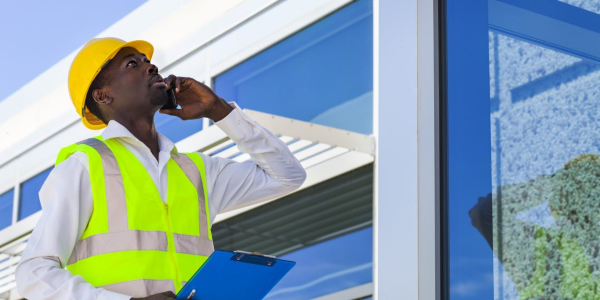Prepare Your Business and Job Sites for Virtual Inspections With These Tips

By Justin Finneran, CertainTeed.
Virtual inspections are becoming commonplace, especially as COVID-19 continues to be an issue.
Due to the COVID-19 crisis, contractors and builders alike have been forced to adjust to taking many precautions, including virtual inspections. As we continue to maneuver through life with COVID-19 and the ever-changing guidelines for safety, crews will have to practice social distancing for the foreseeable future. Complying with new health and safety measures as a result of the coronavirus means construction managers should be prepared for ongoing virtual inspections.
Virtual, or remote, building inspections are not a new concept. Counties and cities have been performing some inspections virtually for more than five years to reduce costs and increase efficiencies.
However, the recent pandemic has accelerated the need for remote inspections. A survey performed in March and April of this year by the International Code Council (ICC) found that 93 percent of building and fire departments are still performing inspections, either remotely or in person. Additionally, 65 percent of survey respondents said some or all employees that conduct plan reviews or inspections are working remotely.
Patience will be required as departments gear up for the shift to remote inspections and contractors should prepare for these to become more commonplace even after COVID-19 restrictions have passed.
What you need for a virtual inspection
Builders and contractors will still have to supply the same information and documentation for a remote inspection as an in-person inspection – only the delivery method will change.
First, be prepared to provide digital documentation. There are many free or inexpensive mobile scanning apps for Android and iOS that produce high-quality scans. Digitizing important documents also provides the benefit of serving as a secondary back-up in the case that hardcopies become damaged.
Most remote inspectors will work with a video app such as FaceTime (Apple iOS devices only), Skype, Google Duo, or Microsoft Teams. Using the app, the contractor will take the inspector on a virtual tour of the area(s) to be inspected. Prior to the inspection, make sure the device is fully charged. During the inspection, disable calls and notifications to avoid frozen video feeds or other delays and interruptions.
Keep in mind that ‘old school’ tools will still be needed. Remember, the inspection itself has not changed – only the delivery method. Make sure you have a tape measure, GFCI tester, ladder, or any other relevant equipment that would normally be used during an in-person inspection readily available.
Tips for inspection day
While each inspection will differ, there are general guidelines that will help make the process run as smoothly as possible.
As with a traditional inspection, follow the inspector’s directions. Start with a street view facing the structure that clearly shows the address. Walk the inspection in a clockwise direction.
If it is a multiple-floor inspection, start from the bottom floor and work your way up. (For residential inspections, start from the top floor to follow the load path.)
It is also a good idea to practice the process with a crew member, as you will want to focus on the inspection without the distraction of worrying about camera operation.
Embrace the change
Virtual inspections have quickly become another “new normal.” But these types of inspections have been trending for a while due to the efficiencies and cost savings they afford. Inspectors are able to perform more inspections in a shorter period of time, resulting in time-savings for contractors as well.
Keep in mind that some types of projects may not qualify (yet) for a remote inspection due to their complexity or the ability to be observed by a video camera. Further, each municipality may have different guidelines as to how they perform inspections.
COVID-19 will eventually pass, but there is a good chance virtual building inspections are here to stay.
Learn more about CertainTeed in their RoofersCoffeeShop Directory.
Original article source: CertainTeed























Comments
Leave a Reply
Have an account? Login to leave a comment!
Sign In